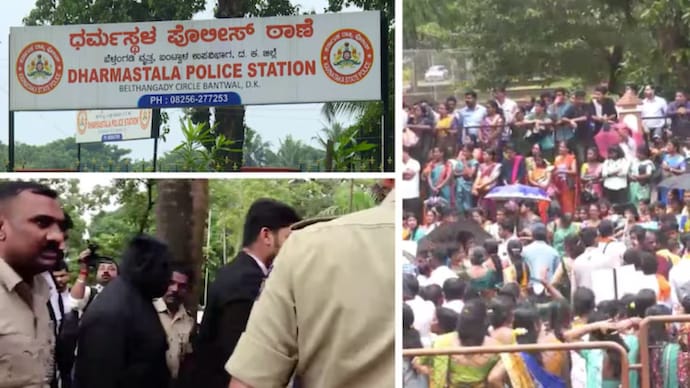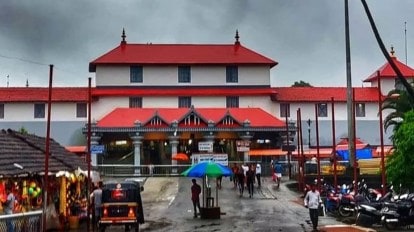Dharmasthala, a revered temple town in Karnataka known for its spiritual heritage and communal harmony, is now at the center of an alarming and deeply unsettling investigation. Allegations have surfaced accusing unidentified parties in the region of conducting mass burials of unidentified bodies over nearly two decades—a revelation that has shaken public faith and drawn intense scrutiny from authorities. In response, the Karnataka government has established a 20-member Special Investigation Team (SIT), tasked with uncovering the truth behind these grave claims, exhuming suspected burial sites, and bringing any perpetrators to justice.
This article examines the origins of the allegations, the legal and forensic steps underway, the societal impact on Dharmasthala and beyond, and the broader implications for law enforcement’s role in protecting vulnerable populations.
The psychological trauma experienced by families of missing persons cannot be overstated, especially in the Dharmasthala case, where uncertainty has been the only constant. For years, mothers, fathers, and siblings have lived in an agonizing absence of closure, haunted by unanswered questions and dead-end investigations. Now, with the SIT actively locating suspected burial grounds, there is a resurgence of hope—but also deep emotional anguish. Many families who long buried their hopes are now being called upon for DNA testing and identification procedures, a process that reopens old wounds.
Psychiatrists and trauma counselors have volunteered their services in affected communities, while the state government has set up grievance redressal camps to collect documentation from victims’ families. The human cost of this case will not be measured only in legal judgments, but in long, painful reckonings with loss.
The involvement of powerful institutional actors is also under the scanner. Preliminary media reports suggest that names of individuals linked to the region’s prominent social trusts and religious managers may emerge as persons of interest. While no official confirmations have been made, political parties and civil society organizations have stressed that the investigation must remain independent and free from high-level interference. Any perception of bias, delay, or shielding of influential entities could erode the public’s faith in the process.
Meanwhile, national-level political reactions have begun surfacing. Several opposition leaders have criticized both state and central administrations for their sluggish response to earlier disappearances reported in the region. Citing police inaction and dismissed FIRs from as far back as 2007, they’ve called for a judicial commission to complement the SIT’s technical work with legal scrutiny.
On the other side, ministers in the Karnataka government have defended their prompt action following the allegations going public. They argue that the SIT reflects their “zero-tolerance” stand and say the team has been given full autonomy to pursue all leads. Nevertheless, the political discourse surrounding this investigation signals that accountability will be demanded at every level—official, institutional, and moral.

1. The Allegations: A Whistleblower’s Gut-Wrenching Revelations
The controversy erupted following a whistleblower’s detailed account alleging that since the early 2000s, a shadowy operation led to the clandestine burial of numerous unclaimed or missing persons’ bodies in and around Dharmasthala’s temple lands and adjoining rural areas. The whistleblower, identified only through investigative sources, claimed involvement or persistent knowledge of systematic cover-ups, where authorities, complicit individuals, or local power brokers reportedly concealed these deaths under the guise of sanctity or social expediency.
The allegations include illegal burials without identification, withholding of death records, and possible neglect or violence leading to death. Families of the missing and several local activists have come forward to demand accountability, prompting widespread concern amid local communities, pilgrims, and human rights organizations.
2. Government’s Swift Response: Formation of a 20-Member SIT
Recognizing the severity and sensitivity surrounding Dharmasthala—a place attracting thousands of devotees annually—the Karnataka government swiftly responded by forming a Special Investigation Team (SIT) comprising police officials, forensic experts, legal advisors, and social workers. Headed by a senior police officer and advised by forensic pathologists, the SIT’s mandate includes:
-
Immediate identification and exhumation of suspected burial sites.
-
Forensic analysis to ascertain causes of death and possible criminality.
-
Verification of official death and missing persons records against burial findings.
-
Collection of testimonies from villagers, temple authorities, and local law enforcement.
-
Ensuring that all procedures maintain cultural respect without compromising investigation integrity.
This multidisciplinary approach aims to balance religious sensitivities with rigorous fact-finding.
3. Forensic Challenges: Excavation and Evidence Collection
The forensic component of the SIT’s efforts is particularly crucial and challenging. The suspected burial sites include dense forest areas, temple peripheries, and remote villages where overgrown vegetation and soil changes complicate exhumations. Preliminary surveys using ground-penetrating radar and cadaver dogs have led to the discovery of multiple tunnels, shallow pits, and disturbed soil patches.
Forensic teams emphasize meticulous protocol to avoid contamination, including DNA sampling, skeletal examinations, and toxicology tests to determine whether deaths were natural, accidental, or suspicious. In several cases, identification may rely on dental records or familial DNA comparisons—a process expected to take months. Experts underscore that conclusive forensic evidence is foundational to ensuring justice rather than speculative narratives.

4. Societal Impact and Community Reactions
The gravity of the allegations has deeply unsettled the residents of Dharmasthala and neighboring districts. Many locals expressed dismay that such acts could have occurred so close to a sacred and peaceful setting. The temple administration, while cooperating with authorities, released an official statement expressing grief that their locality is embroiled in controversy and pledging full transparency.
Families of people previously reported missing in the region have renewed hope that the SIT’s work might finally bring closure. Social organizations supporting victims’ rights have organized awareness campaigns and legal aid clinics to assist families navigate the complex processes ahead.
However, initial reactions have also exposed tensions and fears of social stigma. Some villagers fear retribution or disruption of religious tourism—the lifeblood of the local economy. Public figures and spiritual leaders are urging calm, dialogue, and measured responses, emphasizing justice and healing over hysteria.
5. Historical and Cultural Context: Dharmasthala’s Revered Standing and Vulnerabilities
Dharmasthala’s unique status as a religious and cultural hub means that any news of malpractice affects not just law enforcement but reverberates through societal fabric and interfaith harmony. The town is famed for its centuries-old charitable trusts, temple festivals, and community-centered governance practices.
Some analysts suggest that this closeness and reverence may have historically created enclaves of unaccountability, where acts like unrecorded burials or neglect could be overlooked. Additionally, the presence of a significant transient population—pilgrims, laborers, and destitute migrants—may have contributed to challenges in maintaining comprehensive records on deaths and disappearances, inadvertently allowing systemic lapses.
6. Legal and Ethical Dimensions: Searching for Truth While Upholding Rights
The investigation is unfolding amid complex legal and ethical considerations. Forced exhumations, handling of human remains, and privacy of victims’ families require judicial oversight to ensure dignity and compliance with Indian laws, including the Indian Penal Code and the Code of Criminal Procedure.
Human rights experts stress that the government must also scrutinize any institutional failures—ranging from police negligence to corruption—and hold those responsible accountable. Transparency in communicating findings, protecting whistleblowers, and ensuring victims’ families receive justice and support are paramount.
The SIT’s comprehensive powers include summoning public officials, questioning temple authorities, and collaborating with state and central forensic laboratories to ensure impartial results.
7. Implications for Karnataka and India’s Broader Justice System
The Dharmasthala mass burial investigation has become emblematic of larger systemic issues in India—addressing how marginalized populations, migrant communities, and poor individuals often fall outside official protections. The case highlights the need for better integration of data across civic departments, improved forensic infrastructure in rural areas, and more rigorous monitoring of death and missing persons records.
It also points to the responsibility of religious and social institutions in cooperating with secular law enforcement to uphold human rights and rule of law. The ramifications extend beyond Dharmasthala, prompting policymakers across Karnataka and India to rethink safeguards preventing such tragedies.
Conclusion: A Crossroads of Faith, Justice, and Society
As the SIT digs deeper—literally and figuratively—into the allegations surrounding Dharmasthala, the investigation stands at a crucial crossroads. It challenges the community, judiciary, and administration to uphold justice in a manner that honors human life and faith alike. The coming months will reveal not only the truth behind these haunting allegations but also test the resilience of a society seeking closure after years of silence.
For the people of Karnataka and India, the Dharmasthala case serves as a somber wake-up call—a reminder that no place, however sacred, is immune to human failings, and that transparency, accountability, and compassion must remain the foundations of every community.
Amidst the tension, Dharmasthala’s daily religious life continues, though not unaffected. The temple complex, usually a hub of pilgrimage, charity, and cultural exchange, has taken a noticeably somber tone. Visitor footfall has fallen by nearly 40% in the last fortnight, according to local estimates, though temple authorities remain optimistic that truth and resolution will ultimately restore public confidence. Many community elders have emphasized the need to separate the actions of individuals from the ethos of Dharmasthala itself, which represents centuries of service, reconciliation, and communal balance. In their view, justice delivered swiftly and justly can cleanse not only the land but also restore belief among the faithful.
The role of local media in amplifying the Dharmasthala story has been both historic and integral. Kannada news outlets, particularly regional broadcast networks and independent reporters, were among the first to highlight the credible testimonies of local villagers, social workers, and missing persons’ families. As the investigation grows, media watchdogs have warned against sensationalism while advocating for continued pressure on institutions to maintain transparency. Investigative journalists are now working alongside forensic linguists to translate and digitize years of rural police diaries, temple logs, and unarchived reports that may contain vital information long ignored or unrecognized. This collaborative media-investigation dynamic could set new standards for responsible, justice-oriented journalism in India.
Follow: Dharmasthala
Also Read: 7 Shocking Warnings: IMD Issues Heavy Rain Alerts for Karnataka and Bengaluru as Monsoon Intensifies


